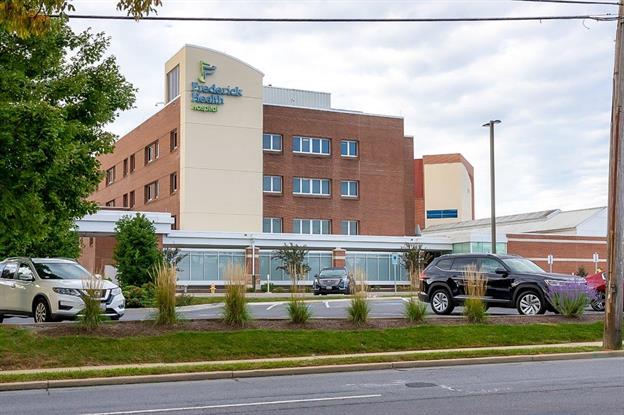The Benefits of Physical Therapy
- Category: Healthy Living, Frederick Health Services
- Posted On:
- Written By: Frederick Health
Some people believe that physical therapy (PT) is only beneficial for athletes, people recovering from surgery, or severe injury, but that’s not true. PT helps people of all ages who have medical or physical conditions that limit their regular abilities or functions. It can be an alternative treatment option to medications for some conditions. In fact, PT can lower patient treatment costs by 72%.
What is PT?
PT is a branch of rehabilitative healthcare where trained professionals use specially designed equipment and personalized exercise regimes to treat abnormal physical functions. Physical therapists can help you maximize your mobility, manage pain and chronic conditions, avoid surgery and prescription drugs, and improve your physical abilities and fitness.
Your doctor may refer you to a physical therapist for preventive, restorative, or pain management purposes.
Common Conditions PT Helps
While PT can help a long list of conditions, here are some of the most common:
- Sports injuries: Many types of sports injuries like stress fractures, sprains, and ligament tears can be treated by PT. Depending on the specific injury, treatment will likely involve a combination of strength and conditioning exercises along with massage therapy.
- Lymphedema: This is when swelling occurs in the arms or legs due to fluid buildup under the skin. Physical therapists use complete decongestive therapy (CDT) to reduce swelling and prevent further fluid buildup.
- Muscular dystrophy: A group of different diseases can cause progressive weakness and loss of muscle mass. Muscular dystrophy can be treated with mobility exercises.
- Neck and back pain: Chronic neck and back pain that lasts for months or years can restrict normal functions. PT can help ease pain and improve mobility in these areas.
- Osteoporosis: This can cause brittle, weakened, thin bones. Fractures are especially common in the hip, spine, and wrist. PT exercises help lessen bone loss in vulnerable areas and improve balance to avoid falls.
- Headaches: People who suffer from migraine or tension-type headaches can benefit from PT by doing exercises for the muscles in the neck, shoulders, and back, releasing headache-causing tension.
- Carpal tunnel syndrome: This is a common condition that causes pain, numbness, and tingling in your hand and arm. Many things, like sitting at a computer all day, can lead to repetitive stress injuries. PT hand and arm stretches and exercises can help.
- Joint replacement: As you heal from a joint replacement surgery, PT helps teach your body how to move again. PT can help reduce pain and discomfort during recovery and help restore you to your previous fitness level.
- Parkinson’s disease: This causes chronic motor limitations and tremors. Physical therapists can guide you through moves to increase mobility, strength, balance, and improve your independence.
Benefits of PT
Depending on the reason for treatment, the benefits of PT may include:
- Pain management. Therapeutic exercises and therapy can help restore muscle and joint function, reducing pain and possibly preventing pain from returning.
- Reduced need for prescription drugs. With pain being managed or reduced, there’s a lessened need for certain prescription drugs like opioids.
- Avoiding surgery. If PT helps eliminate pain or heal an injury, surgery may not be needed. If surgery is needed, having PT beforehand will help you recover faster in many cases.
- Improved mobility and movement. Stretching and strengthening exercises can help people of all ages restore their ability to move.
- Injury recovery or prevention. Physical therapists understand how certain activities, like sports, increase your risk for certain types of injuries. They can provide personalized treatment or prevention exercises to ensure you remain as safe as possible.
- Recovery from stroke or paralysis. After a stroke, it’s common to lose some movement and function. PT can help rebuild strength in weakened parts of the body.
- Fall prevention. Physical therapists can provide exercises that safely challenge your balance and work through ways to improve it.
- Manage age-related medical issues. As you age, you may develop conditions like arthritis or osteoporosis. PT can help reduce and manage symptoms caused by these conditions.
- Manage heart and lung disease. Following a heart attack or procedure, you may complete cardiac rehabilitation. PT can also help you if your daily function is affected by heart disease. PT can also improve the quality of life for those with pulmonary problems through breathing exercises, strengthening, and conditioning.
Frederick Health Physical Therapy & Sports Rehab offers comprehensive, personalized outpatient rehabilitation services for adults and children. Our skilled team is committed to providing treatment and care that is specific to your unique needs. For more information, visit our website or contact us at 240-566-3132.


